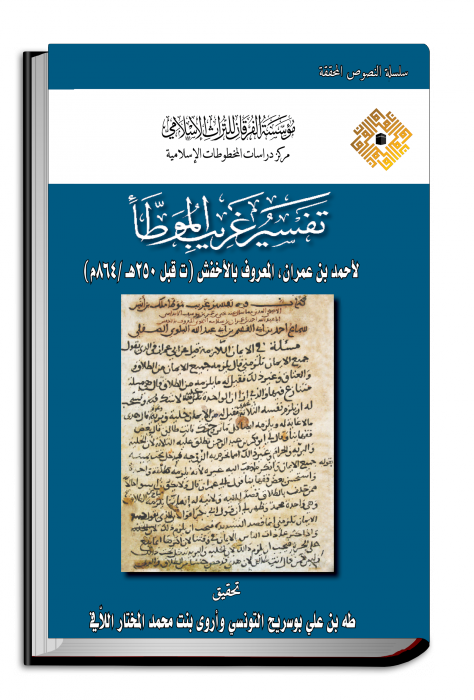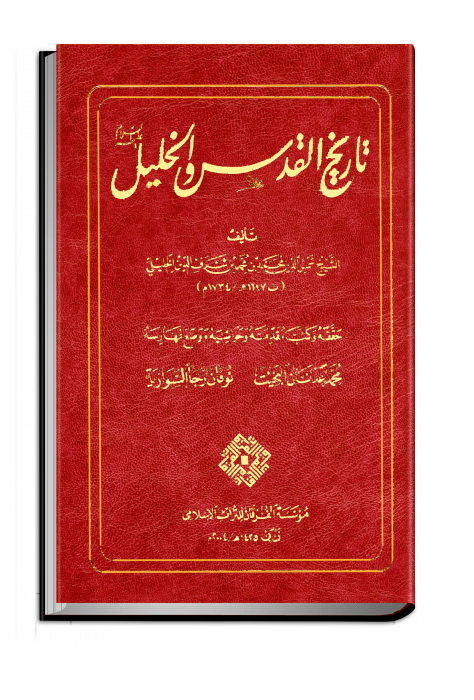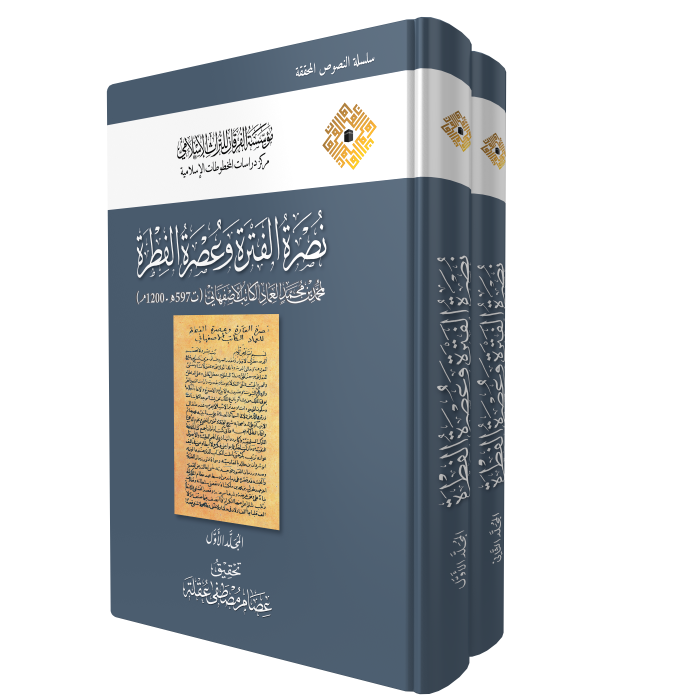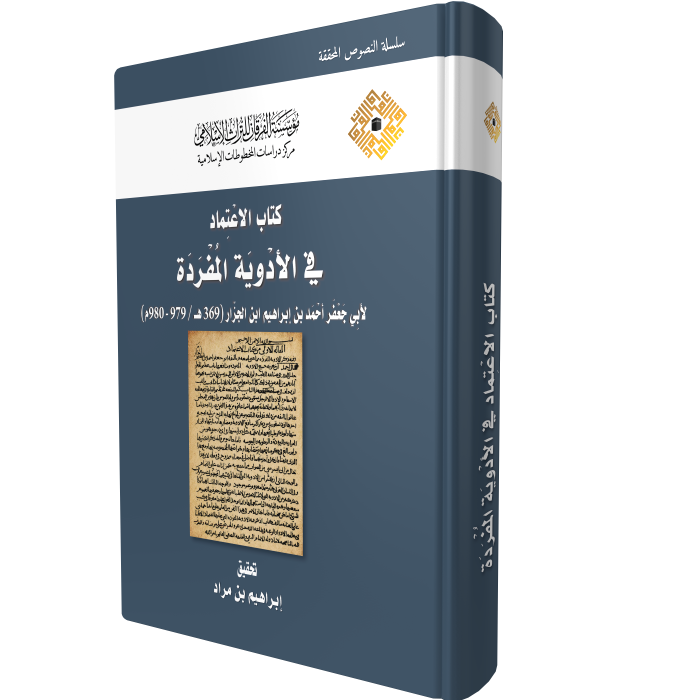Tafsīr Gharīb al-Muwaṭṭaʾ (Intepretation of Unfamiliar Words in Al-Muwaṭṭaʾ) by Aḥmad ibn ʿUmrān, known as al-Akhfash (d. before 250 AH/ 864 CE)
This important tome is considered one of the first and oldest books that has offered a general explanation of “al-Muwaṭṭa’”, in specifically addressing the obscure terms within. The erudite scholar, al-Akhfash, authored this explanatory text aligned to the prevailing culture of the time. In this, he was aided by his broad knowledge of Qur’ān and Prophetic tradition (Sunnah), and mastery of the literary arts, namely language, poetry, etc. The importance of this book lies in the illustrious place al-Muwaṭṭa’ occupies in the hearts of Muslims generally, and jurists and Ḥadīth scholars, in particular. It is also due to the stature of Mālik b. Anas, author of al-Muwaṭṭa’, who is widely recognised as an eminent and outstanding scholar for his knowledge and memory retention of the traditions of God’s Messenger—God’s peace and blessing be upon him. In turn, the author of Tafsīr gharīb al-Muwaṭṭa’ is a unique personality, considered one of the most prominent scholars of his time. He is a master of syntax and language, faithful narrator of Prophetic tradition, and mostly famous for his commentary of al-Muwaṭṭa’. Tafsīr gharīb al-Muwaṭṭa’ comprises explanations of obscure terms from al-Muwaṭṭa’, which the author selected from the beginning of the text to the end. However, he did not adhere to the order of chapters of al-Muwaṭṭa’. He began with the chapter, Kitāb wuqūt al-ṣalāh, but followed that with Kitāb al-jāmi‘ then Kitāb al-ḥajj. Moreover, al-Akhfash did not restrict himself to any specific narration (riwāyah) of al-Muwaṭṭa’, but sometimes discussed a term from the narration of Abū Mus‘ab al-Zuhrī, and at other times, from the narrations of Yaḥyā al-Laythī, or Ibn Bakīr. It is also apparent that Aḥmad b. ‘Umrān only explained those Prophetic traditions (Ḥadīth) in al-Muwaṭṭa’ where an obscure term appears. As such, he did not offer an explanation of the book in its entirety, but presented the word to be explained in the Prophetic tradition, then listed its different meanings, proving his explanation from Qur’ān verses and Prophetic traditions. He would sometimes support this by citing from the large number of Arab poetic verses retained in his memory. Despite the small size of this work, it has had a clear and beneficial effect on later scholars who applied themselves to explaining al-Muwaṭṭa’, particularly those from al-Maghrib and al-Andalus, as well as their successors in the Eastern part of the Muslim world.
 Shared Knowledge
Shared Knowledge


 History of al-Quds (Jerusalem) and al-Khalīl (Hebron) by Muḥammad b. Muḥammad b. Sharaf al-Dīn al-Khalīlī (d. 1147 A.H / 1734 A.D)
History of al-Quds (Jerusalem) and al-Khalīl (Hebron) by Muḥammad b. Muḥammad b. Sharaf al-Dīn al-Khalīlī (d. 1147 A.H / 1734 A.D) Nuṣrat al-Fatrah wa-ʿUsrat al-Fiṭrah (The History of the Seljuks) by Muḥammad ibn Muḥammad al-ʿImād al-Kātib al-Aṣfahānī (597 AH/1200 CE)
Nuṣrat al-Fatrah wa-ʿUsrat al-Fiṭrah (The History of the Seljuks) by Muḥammad ibn Muḥammad al-ʿImād al-Kātib al-Aṣfahānī (597 AH/1200 CE) Kitāb al-Iʿtimād fī al-Adwiyah al-Mufradah (The Reliable Book on Simple Drugs) by Abū Jaʿfar Aḥmad Ibn Ibrāhīm Ibn Al-Jazzār (369 AH/979-980 CE)
Kitāb al-Iʿtimād fī al-Adwiyah al-Mufradah (The Reliable Book on Simple Drugs) by Abū Jaʿfar Aḥmad Ibn Ibrāhīm Ibn Al-Jazzār (369 AH/979-980 CE)